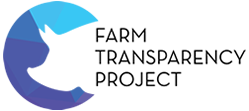News & Media > Investigator Diaries > Behind Every Glass
"I’ve always been afraid of the dark” investigator Sarah* says. “But that night I squashed down my fear and together with the team ran through the fields over uneven ground.”
We entered the dairy. In the nights that followed we documented the horrors as we uncovered the full spectrum that is dairy, and the lifelong cruelty the calves and their mothers faced, their sad and broken lives, from farm to saleyard to slaughterhouse.
Experienced investigator Ruth* was overwhelmed with the sight that met her eyes. “It was overwhelming. I wanted to cry but I had work to do. I needed to document their suffering and show the true cost of dairy.”
The infrastructure was ramshackle. The crates were held together with wire and looked as though they had never been cleaned. The calves were caked in faeces and the smell of sour milk was thick in the air. Many had untreated injuries, blindness, ticks, and infections. They had only dry milk powder to eat, rather than the milk of their mothers. Stereotypic behaviours such as pacing and chewing on the bars of their crates were exhibited by many of the calves.
“The noise of their cries was deafening. So deafening I couldn't hear any of the team members through the radio headset. Calves trying to chew on my jacket. Licking my fingers. Cats crawling up my leg and across my shoulders.” says Ruth. “I learned that on this dairy the crates were not just for the male calves, this was the start of life for the females that would replace their mothers.”
A newborn calf was tethered with a nylon cord outside. His mum bellowed with pain, unable to comfort him as he was out of her reach. On another night a discarded calf lay dead in the cold rain.
The investigation took longer than expected. Their books recorded dates of multiple births to come, but on those nights all was quiet. There was no way to find out why these pregnant mothers didn’t give birth so we returned multiple times. Some nights cameras slipped in the rain, or failed to record. Also recorded in their books was the extensive use of antibiotics, sickness and deaths. Finally we had what we needed and we moved on to document the treatment of the calves at Woodford Saleyard.
Here, in the dilapidated saleyard, calves were treated as if they were worthless, selling for $20-$25. The metal stamp “H” in blue paint marked their destiny: Highchester Abattoir.
“The elderly, hunched, Highchester Slaughterhouse buyer lurked close, notepad tucked under his arm, reminding us of a vulture, preying on the vulnerable.” Sarah remembers.
We watched a worker illegally and constantly electrically prodding a downed calf to make him stand. Downed calves can’t be sold, they must be on their feet. The worker met our eyes, warning us to be silent, then lifted the calf by the tail, forcing him to stand, and in those seconds the auctioneer called for bids. Little did the worker know that our buttonhole camera captured his actions.
Their mothers suffer, too. Once no longer useful for milking they are considered spent by the dairy and sent here. Many develop mastitis, a painful inflammation which can involve high temperatures and infection. This is due to being left with full udders after being milked twice per day in the dairy. We never did find out where the majority of ‘spent’ dairy cows are slaughtered in Queensland.
We then moved on to Highchester Abattoir. We installed hidden cameras and documented the calves' final journey.
The calves faced a long, drawn-out and terrifying ordeal. They cried so loudly we couldn’t hear our radios, communication between us was done with a touch on the shoulder. We sat in the pens as these starved frightened babies, many with umbilical cords still attached, suckled our fingers.
Knowing it is legal for these 6 day old calves to be starved of food and water for up to 30 hours, and witnessing their scouring which would have added to their dehydration, broke our hearts. We were the first and last gentle touches they experienced.
The next day they were slaughtered.
In reviewing the footage, we were horrified but not surprised at the complete disregard for the calves and the brutality imposed on them by the workers. We were even more appalled by the suggestive overtones directed at one of the calves as he hung by his leg.
“The calf was vulnerable and terrified in those last moments before having his throat cut” says Ruth. “I could see him kick in pain as his tail was twisted, bent and squeezed tight.”
The dairy that was exposed was a supplier for Pauls Parmalat Milk. After a video was released, from Sippel’s Dairy to Woodford Saleyard to Highchester Abattoir, the Pauls sign outside the dairy was removed and replaced with a Biosecurity sign.
The footage that was released, and the activists locking on inside the slaughterhouse, got good media coverage, and it was this coverage that raised awareness of what was happening to these animals, both the calves and their mothers, and ultimately shut down the dairy.
At Woodford Saleyard, it’s business as usual. It has fallen into such disrepair we are surprised it is still allowed to operate.
Highchester Abattoir closed its doors in late 2023.
*Investigators have chosen aliases to obscure their identities.


